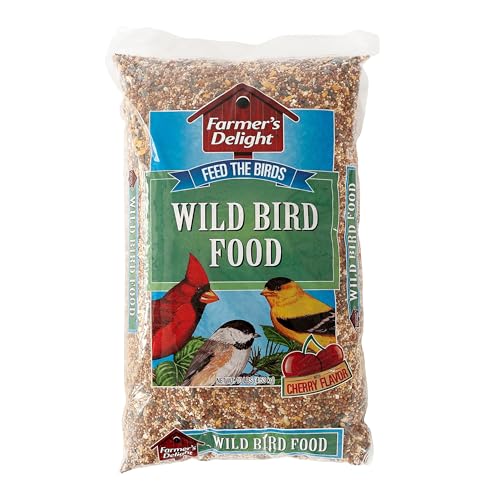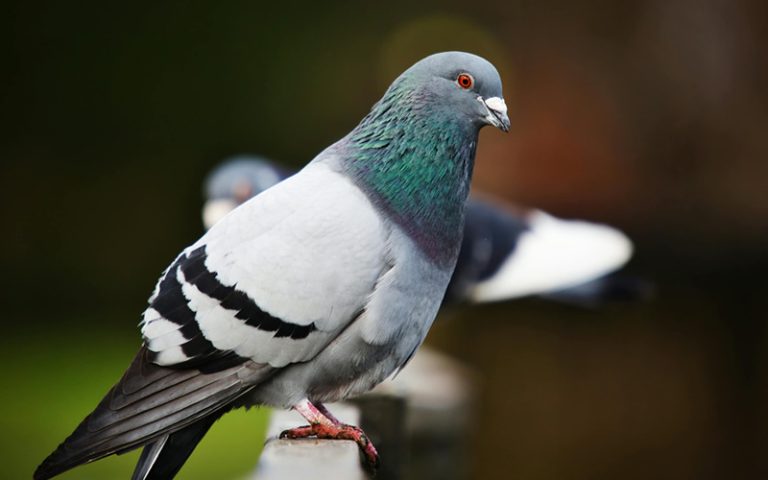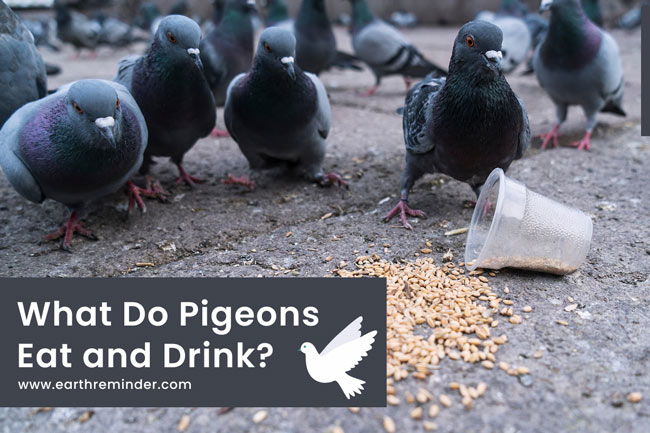Do People Eat Pigeons? Exploring Culinary Curiosities
Yes, people do eat pigeons. Known as squab, pigeon meat is considered a delicacy in many cultures.
Eating pigeons has a long history, dating back to ancient civilizations. These birds are often raised for their tender meat and unique flavor. Chefs appreciate squab for its rich taste and versatility in various dishes. In countries like France and China, pigeon is a sought-after ingredient in gourmet cuisine.
Urban areas often see feral pigeons as pests, but they have a place on the dining table in many cultures. Sustainable farming practices also promote pigeon rearing, making it a viable protein source. Overall, squab offers culinary enthusiasts an interesting and delicious option to explore.
Introduction To Pigeon As A Delicacy

Credit: wearethesaltbox.co.uk
Pigeons, often seen as city dwellers, hold a unique place on plates worldwide. In many cultures, they are considered a delicacy. This blog explores their history and cultural significance as food.
Historical Context
Pigeons have been part of human diets for centuries. Ancient civilizations enjoyed them. Here are some key points:
- Ancient Romans raised pigeons for food.
- Pigeons were a staple in medieval European diets.
- Farmers kept them for their meat and eggs.
In some regions, hunting pigeons is still common. Their meat is tender and flavorful, making them a sought-after dish.
Cultural Significance
Pigeons hold cultural importance in various societies. They symbolize different things in different places. Here are some examples:
| Culture | Symbolism | Dish |
|---|---|---|
| French | Gourmet cuisine | Pigeon en Cocotte |
| Chinese | Prosperity | Steamed Pigeon |
| Middle Eastern | Tradition | Stuffed Pigeon |
People celebrate pigeons in festivals and special events. They often appear in traditional dishes. Pigeons bring communities together through shared meals.
Global Culinary Traditions
People around the world have unique food traditions. Some cultures include pigeons in their dishes. This practice may surprise many. Yet, it showcases the variety of cuisines globally. From French to Middle Eastern cultures, pigeons hold a special place.
French Cuisine
In France, pigeon is often called “pigeon” or “pigeonneau”. It is a delicacy in many regions. Chefs prepare it in various ways:
- Roasted with herbs
- Stuffed with fruits and nuts
- Served in rich sauces
French chefs consider pigeon meat tender and flavorful. It is popular in gourmet restaurants. Classic dishes include:
- Pigeon with wild mushrooms
- Roasted pigeon with thyme
- Pigeon confit
Many French families enjoy pigeon during special occasions. It symbolizes luxury and sophistication.
Middle Eastern Dishes
In the Middle East, pigeons are also a culinary favorite. They are known for their rich flavors. People prepare them in various ways:
- Stuffed with rice and spices
- Grilled over open flames
- Cooked in savory stews
Common dishes include:
| Dish Name | Main Ingredients |
|---|---|
| Mahshi Hamam | Pigeons, rice, spices |
| Grilled Pigeon | Pigeons, olive oil, herbs |
| Pigeon Stew | Pigeons, vegetables, broth |
Pigeon dishes often appear during celebrations. They represent hospitality and tradition.
Nutritional Value Of Pigeon Meat
Pigeon meat, often overlooked, has impressive nutritional benefits. It is a lean protein source, rich in essential nutrients. Many cultures enjoy pigeon as a delicacy. Understanding its nutritional value can help you appreciate this unique meat.
Health Benefits
Pigeon meat offers several health benefits:
- High in Protein: Pigeon meat contains around 25 grams of protein per 100 grams.
- Low in Fat: It has only about 3 grams of fat per serving.
- Rich in Vitamins: Pigeon meat is a good source of B vitamins.
- Mineral Content: Provides iron, phosphorus, and zinc.
These nutrients support muscle growth and overall health. The low-fat content makes it a great option for weight management.
Comparative Analysis With Other Meats
| Meat Type | Protein (g/100g) | Fat (g/100g) | Calories |
|---|---|---|---|
| Pigeon | 25 | 3 | 150 |
| Chicken | 31 | 7 | 239 |
| Beef | 26 | 20 | 250 |
| Pork | 27 | 14 | 263 |
Pigeon meat stands out with its high protein and low fat. It compares favorably to chicken, beef, and pork. Choosing pigeon can benefit those seeking healthier meat options.
Selecting And Preparing Pigeon
Selecting and preparing pigeon can be an interesting culinary adventure. Many people enjoy this unique delicacy. Knowing how to choose the right bird and the best cooking techniques makes all the difference.
Choosing The Right Bird
Choosing the right pigeon is crucial for a tasty meal. Here are some tips:
- Look for Freshness: Choose birds that appear lively.
- Check the Skin: It should be smooth and unblemished.
- Inspect the Color: Fresh pigeons have bright, vibrant feathers.
- Weight Matters: Opt for heavier pigeons for more meat.
Buying from reputable sources ensures you get quality birds. Farmers’ markets or specialty stores are great options.
Cooking Techniques
Cooking pigeon requires some special techniques. Here are popular methods:
| Cooking Method | Description |
|---|---|
| Roasting | Cook in the oven for a crispy skin. |
| Grilling | Add smoky flavor with high heat. |
| Stewing | Slow cook for tender meat. |
| Frying | Use oil for a crunchy texture. |
Each method enhances the pigeon’s natural flavor. Marinating adds extra taste. Use herbs like rosemary, thyme, or garlic.
Experiment with cooking times. This will help you find your preferred doneness. Remember, practice makes perfect!
Famous Pigeon Recipes
Pigeons, often seen in urban areas, have culinary value. They are not just birds; they are a delicacy in many cultures. Here are two famous pigeon recipes that showcase their unique flavors.
Squab Pie
Squab, or young pigeon, offers tender and flavorful meat. This pie highlights its rich taste. Here’s a simple recipe:
- Ingredients:
- 2 squabs
- 1 pie crust
- 1 cup mushrooms, chopped
- 1 onion, diced
- 2 tablespoons butter
- 1 cup chicken broth
- Salt and pepper to taste
- Instructions:
- Preheat the oven to 375°F (190°C).
- Cook onions and mushrooms in butter until soft.
- Add squab, broth, salt, and pepper. Cook for 10 minutes.
- Pour mixture into the pie crust.
- Cover with another crust. Seal edges.
- Bake for 30 minutes. Serve hot.
Roasted Pigeon
Roasting pigeon brings out its deep flavors. The skin becomes crispy, and the meat remains juicy. Try this simple method:
- Ingredients:
- 4 pigeons
- 2 tablespoons olive oil
- 4 garlic cloves, minced
- 1 tablespoon fresh rosemary, chopped
- Salt and pepper to taste
- Instructions:
- Preheat the oven to 400°F (200°C).
- Mix olive oil, garlic, rosemary, salt, and pepper.
- Rub the mixture on each pigeon.
- Place pigeons in a roasting pan.
- Roast for 25-30 minutes. Check internal temperature.
- Let rest for 10 minutes before serving.
These recipes show how delicious pigeon can be. Try them for a unique dining experience!

Credit: www.studentsinwarsaw.com
Contemporary Culinary Scene
The contemporary culinary scene embraces diverse flavors and unusual ingredients. Chefs experiment with traditional foods, pushing boundaries. One such ingredient gaining popularity is the pigeon. Once viewed as a common bird, it now graces fine dining menus.
Pigeon In Fine Dining
Fine dining restaurants showcase pigeon as a gourmet delicacy. Chefs prepare it in various styles, highlighting its unique flavor. Here are some key aspects of pigeon in fine dining:
- Flavor Profile: Rich, gamey taste with tender meat.
- Cooking Techniques: Roasting, braising, and sous-vide.
- Presentation: Artful plating enhances visual appeal.
| Dishes | Description |
|---|---|
| Roasted Pigeon | Crispy skin, juicy meat, served with seasonal vegetables. |
| Pigeon Breast Tartare | Raw, seasoned pigeon served with a quail egg. |
| Pigeon Ragu | Slow-cooked sauce, served over pasta. |
Innovative Pigeon Dishes
Chefs create innovative pigeon dishes that surprise diners. These dishes combine traditional recipes with modern techniques. Here are some innovative pigeon dishes:
- Pigeon Pizza: Topped with roasted pigeon and gourmet cheeses.
- Pigeon Tacos: Shredded pigeon meat with fresh toppings.
- Pigeon Risotto: Creamy risotto infused with pigeon stock.
These innovative dishes reflect culinary creativity. The pigeon’s versatility makes it a favorite among food enthusiasts.
Ethical And Environmental Considerations
Eating pigeons raises important ethical and environmental questions. People often wonder about the sustainability of pigeon farming and the welfare of these birds. Understanding these factors can help consumers make informed choices.
Sustainability Of Pigeon Farming
Pigeon farming can be a sustainable practice. Here are some key points:
- Low resource use: Pigeons require less food and water than larger livestock.
- Quick reproduction: Pigeons breed rapidly, ensuring a steady supply.
- Waste management: Pigeon droppings can be used as fertilizer, benefiting crops.
Comparing pigeon farming to other livestock:
| Animal | Resource Needs | Reproduction Rate |
|---|---|---|
| Pigeons | Low | High |
| Cows | High | Low |
| Pigs | Moderate | Moderate |
Pigeon farming can reduce the ecological footprint. Fewer resources mean less environmental strain. This makes it a viable option for sustainable meat production.
Animal Welfare Issues
Animal welfare is a significant concern in pigeon farming. Here are some issues to consider:
- Living conditions: Pigeons must have adequate space and clean environments.
- Health care: Regular veterinary care is essential for their well-being.
- Stress factors: Crowding and poor handling can lead to stress and illness.
Consumers should look for ethical farming practices. Here are some questions to ask:
- Are the pigeons raised in humane conditions?
- Is there access to veterinary care?
- How are the pigeons handled during farming and processing?
Choosing ethically sourced pigeon meat can support better animal welfare. It encourages farmers to adopt humane practices. Understanding these aspects can lead to more responsible eating choices.
Credit: www.quora.com
Experiencing Pigeon Cuisine
Pigeon cuisine offers a unique dining experience. Many cultures enjoy this dish. It is known for its rich flavor and tender texture. Eating pigeon might sound unusual, but it has a long history. Let’s explore the dining etiquette and where to find pigeon dishes.
Dining Etiquette
Understanding dining etiquette is essential for any cuisine. Here are some tips for enjoying pigeon dishes:
- Start with a light appetizer.
- Use appropriate utensils, like a knife and fork.
- Chew slowly to savor the flavors.
- Engage in polite conversation during the meal.
- Thank the chef for the delicious dish.
Where To Find Pigeon Dishes
Pigeon dishes can be found in various places. Below is a list of popular locations:
| Location | Specialty Dish |
|---|---|
| France | Pigeon à la Crème |
| Italy | Piccione al Forno |
| Spain | Pichón con Arroz |
| Middle East | Stuffed Pigeon |
Check local markets and specialty restaurants. Many chefs create unique recipes. Don’t hesitate to ask about pigeon options.
Frequently Asked Questions
Do People Really Eat Pigeons?
Yes, pigeons are consumed in various cultures around the world, often referred to as “squab” when young.
What Do Pigeon Dishes Taste Like?
Pigeon meat is tender and flavorful, often described as a cross between duck and dark chicken.
Is Eating Pigeons Safe?
Yes, as long as they are sourced from reputable suppliers and cooked properly to avoid health risks.
How Are Pigeons Prepared For Eating?
Pigeons can be roasted, grilled, or stewed, with various seasonings enhancing their rich taste.
Do People Really Eat Pigeons?
Yes, people eat pigeons. These birds are known as squab when they are young and tender. Many cultures around the world enjoy pigeons as a delicacy. In some regions, it is a common dish, often roasted or stewed. Pigeon meat is rich in flavor and can be quite nutritious.
Farmers raise pigeons for food, and urban areas sometimes see pigeons served in restaurants. While not everyone considers pigeons suitable for eating, they are a part of various culinary traditions. Eating pigeons may surprise some, but it remains popular in many cuisines globally.







